Introduction
Autism Spectrum Disorder (ASD) is a complex neurodevelopmental condition with a significant genetic influence. Research conducted by reputable institutions and approved by ethical entities, such as the Danish Data Protection Agency, has shed light on the crucial role of genetic variations in the development of ASD. Collaborative efforts, like the Baby Siblings Research Consortium, have revealed the recurrence of autism in siblings, suggesting a hereditary pattern.
Understanding the intricate interplay between genetics and the environment is essential in unraveling the tapestry of autism. Cutting-edge tools, such as Genotypes and Phenotypes in Families (GPF), are expanding our understanding of ASD's genetic landscape. Despite evolving diagnostic criteria, the consensus remains: deciphering the genetic factors of ASD is vital for tailored interventions and nurturing the potential of individuals with autism.
Genetic Factors in Autism
Autism Spectrum Disorder (ASD) is acknowledged as a multifaceted neurodevelopmental condition with a significant hereditary impact. Research initiatives, rigorously adhering to ethical guidelines and approved by entities such as the Danish Data Protection Agency, have highlighted the pivotal role of genetic variations in ASD's etiology. Arising from collaborations such as the Baby Siblings Research Consortium, findings highlight the reoccurrence of a developmental disorder in siblings, indicating a genetic pattern. Indeed, the complex interplay between genetics and environment shapes the terrain of the condition, with specific genes serving as indicators for increased vulnerability. Furthermore, studies like those conducted by the team at Cold Spring Harbor Laboratory, using tools like Genotypes and Phenotypes in Families (GPF), are pushing the boundaries of our understanding. Despite the changing standards for diagnosing and identifying cases, the consensus remains: unraveling the intricate genetic makeup of ASD is crucial for customizing interventions and fostering the complete potential of individuals with the condition.
Heritability of Autism: Family and Genetic Links
Investigating the inherited characteristics of the disorder spectrum (ASD) uncovers convincing evidence for its inheritability. Research emphasizes that ASD often clusters within families, suggesting that hereditary components play a pivotal role in its transmission. Siblings of individuals with ASD present a notably higher risk of developing the condition than the broader population, an observation that is supported by a breadth of studies. This familial pattern is particularly pronounced in monozygotic (identical) twins, who show greater concordance rates for ASD when contrasted with dizygotic (fraternal) twins. This twin study paradigm lays a strong basis for comprehending the underpinnings of autism.
Substantial progress in this field has been achieved thanks to rigorous investigative practices that adhere to ethical guidelines, such as those followed in studies approved by the Danish Data Protection Agency, ensuring the confidentiality and integrity of participant data. These studies are invaluable in piecing together the intricate genetic puzzle of ASD.
A significant study by the Baby Siblings Research Consortium, which involves more than 20 investigation groups globally, confirms previous findings concerning the heightened probability of autism in siblings. Spearheaded by experts like Sally Ozonoff from the UC Davis MIND Institute, this research provides a rich, diverse data set from numerous families across North America and Europe.
Moreover, the intricate connection between mutations and ASD presents a mystery; despite their cellular differences, certain mutations result in similar behavioral manifestations, indicative of a potential shared neural mechanism. This emphasizes the necessity for ongoing exploration into the hereditary structure of ASD, which not only exhibits characteristics with other psychiatric disorders but also may be affected by parental psychiatric histories.
As researchers, including those at Cold Spring Harbor Laboratory (CSHL), delve into the genetics of ASD, they do so with the ultimate aim of improving the lives of those affected by ASD and their families. Advancements like the Genotypes and Phenotypes in Families (GPF) tool developed by Professor Iossifov at CSHL demonstrate the progress in the understanding of disorders, illuminating their origins and potentially directing future breakthroughs.
In summary, the factors associated with the inheritance of autism spectrum disorder are complex and multifaceted, with studies indicating a significant hereditary component. The ongoing commitment to ethical, thorough, and innovative research is essential to uncovering the secrets of ASD and promoting a deeper understanding that can result in more effective interventions and support for individuals with ASD and their families.
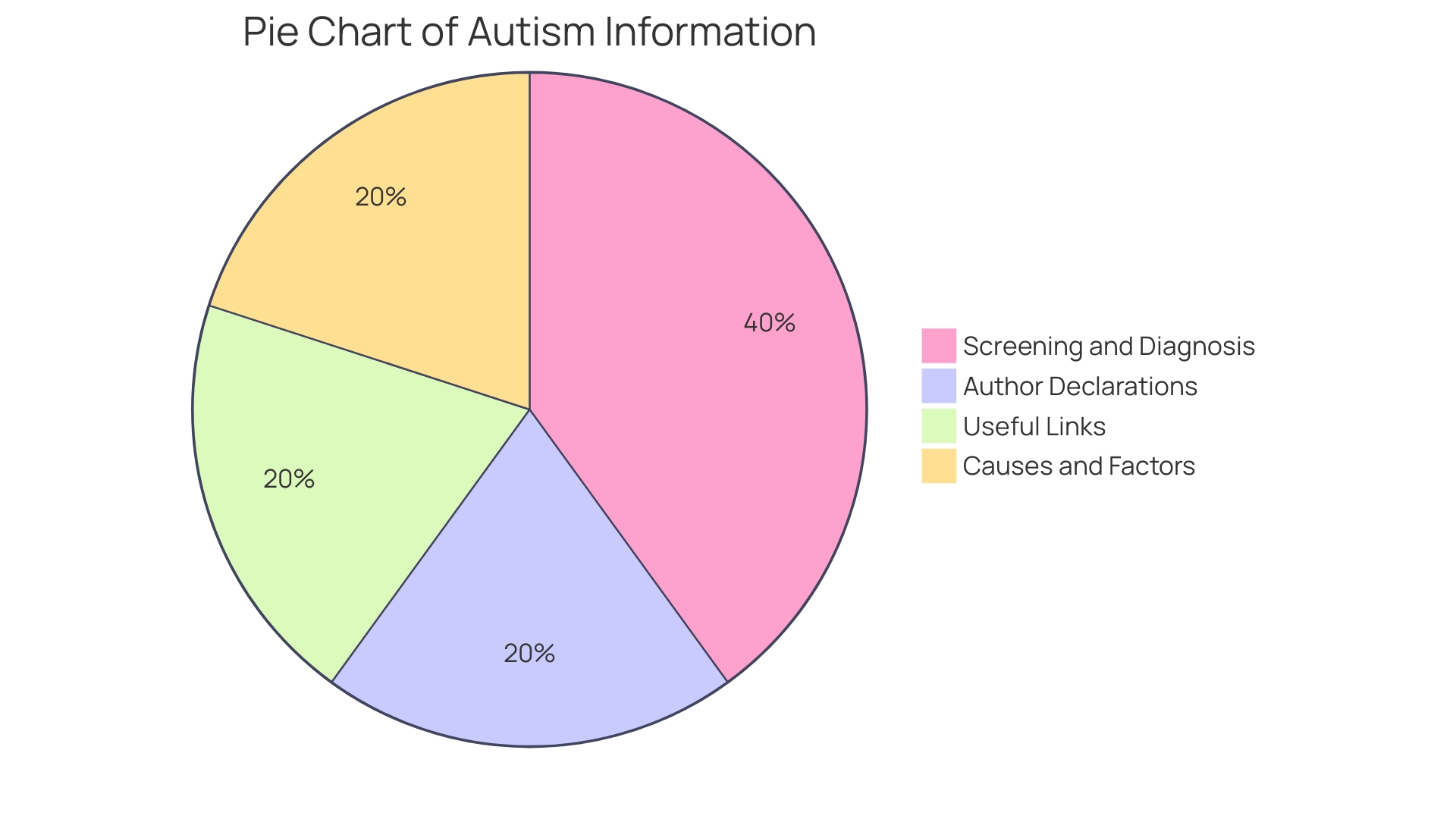
Specific Genetic Mutations and Autism Risk
Genetic mutations play a pivotal role in the etiology of autism spectrum disorder (ASD), with certain alterations in genes significantly elevating the risk of its development. Notably, mutations in genes such as SHANK3, CHD8, and PTEN are more commonly observed among individuals with ASD. These specific changes may disrupt normal brain development and functionality, potentially resulting in the manifestation of symptoms related to autism. Exploring the details of these mutations provides a clearer understanding of the biological foundations of ASD. It's not just about identifying these mutations; understanding their impact on cellular and developmental processes is crucial for comprehending the full scope of the disorder.
As research continues to advance, tools like Genotypes and Phenotypes in Families (GPF) are being developed to further explore the intricate genetic aspects of individuals with autism. These innovative approaches are crucial as they offer the promise of uncovering new insights into the disorder's origins and potentially guiding the creation of targeted interventions. The range of presentations in individuals, from those who are non-verbal and require extensive support to those who live independently, indicates that the factors involved in inheritance are intricate and diverse. By recognizing this diversity, researchers can better tailor their studies and, ultimately, the support provided to individuals with ASD and their families.
Interaction Between Genetic and Environmental Factors
While elements related to heredity play a crucial role in comprehending spectrum disorder (ASD), it is becoming evident that the interaction between predispositions influenced by genes and external factors is equally vital. Factors like prenatal substance exposures, maternal health conditions, and complications during birth can amplify the risk of ASD when combined with genetic vulnerabilities. Pioneering work by researchers such as Professor Iossifov, who developed the Genotypes and Phenotypes in Families (GPF) tool, is shedding light on how these complex interactions may influence the development of ASD. His groundbreaking approach may lead to revolutionary findings in the study of developmental disorders.
Recent studies, including the one approved by the Danish Data Protection Agency, underscore the necessity of adhering to ethical guidelines and the importance of informed consent in this sensitive area of research. Investigations into the repetition of a certain developmental disorder within families have revealed that while genetics play a substantial role, the environment cannot be overlooked. For instance, the Baby Siblings Research Consortium, with its diverse group of families, has contributed to our understanding of the likelihood of autism in siblings, confirming findings from their 2011 study on this matter.
Autism investigation has also emphasized the necessity to closely analyze perinatal risk factors, particularly considering the influence of maternal and metabolic factors, as well as epigenetic changes in offspring. The impact of fertility treatments, ranging from less invasive methods like ovulation induction to more complex procedures such as in vitro fertilization, is also being scrutinized for its potential connection to ASD.
Scientists like Auerbach are investigating whether mutations linked to ASD that have contrasting cellular effects might come together at the level of neural circuits, specifically concentrating on sensory hypersensitivities like auditory processing. Discoveries from such studies could greatly enhance the quality of life for individuals with ASD, who often face challenges in overwhelming sensory environments.
As we continue to explore the underlying basis of autism, it is crucial to incorporate strong ethical frameworks and uphold a commitment to the integrity of the research process. Only with a holistic approach that takes into account both hereditary and environmental factors can we hope to unravel the complexities of ASD and enhance the support for individuals and families affected by the condition.
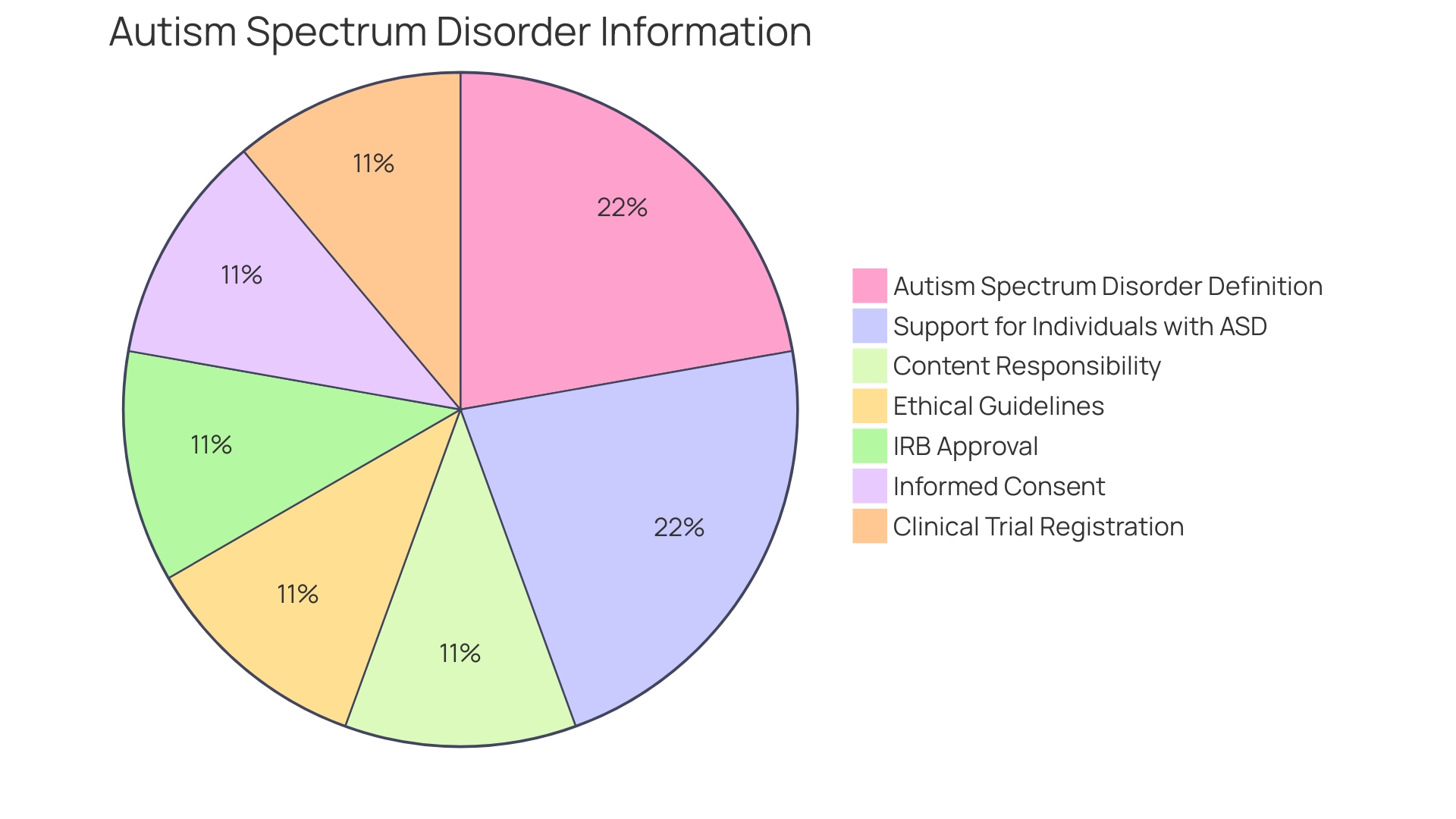
Examples of Genetic Syndromes Associated with Autism
Autism Spectrum Disorder (ASD) has intricate ties with certain hereditary syndromes, drawing a complex map of interrelated conditions. For instance, Fragile X syndrome, Rett syndrome, and tuberous sclerosis each exhibit a notable overlap with autism manifestations. Delving into the intricate complexities of these syndromes unveils the shared biological pathways and mechanisms that could be influencing the development of ASD. Such insights are not just academically enriching; they hold the potential to spearhead the creation of precise treatments and interventions.
In the journey to unravel the puzzles of ASD, individual stories like that of an 11-year-old boy with an abnormal gait emerge. Despite extensive medical consultations, his condition remained a mystery until he reached a facility like the Children's National Hospital, which specializes in hereditary disorders. This reflects the broader narrative of ASD-related hereditary conditions, often requiring advanced hereditary expertise for diagnosis and management.
The instance of Timothy syndrome, a condition characterized by severe symptoms including autism, epilepsy, and cardiac disturbances, exemplifies the importance of studying genes in ASD. It involves the CACNA1C gene, which, due to abnormal RNA splicing, leads to the continuous production of a developmental form of a protein, resulting in overactive calcium channels. This discovery has propelled the development of targeted treatments, like antisense oligonucleotides (ASOs), offering a glimmer of hope for managing such rare genetic disorders.
In the midst of these scientific endeavors, it's important to highlight that all investigations and interventions are carried out with strict adherence to ethical standards, as emphasized by the National Institutes of Health and approved by entities like the Danish Data Protection Agency. Furthermore, the wide range of ASD, as emphasized by ongoing research, underscores the variety of experiences among individuals with ASD, from those facing significant daily challenges to others who thrive independently. Comprehending the genetic factors of this multifaceted condition not only assists in the advancement of specific treatments but also improves our comprehensive understanding of this complex disorder.
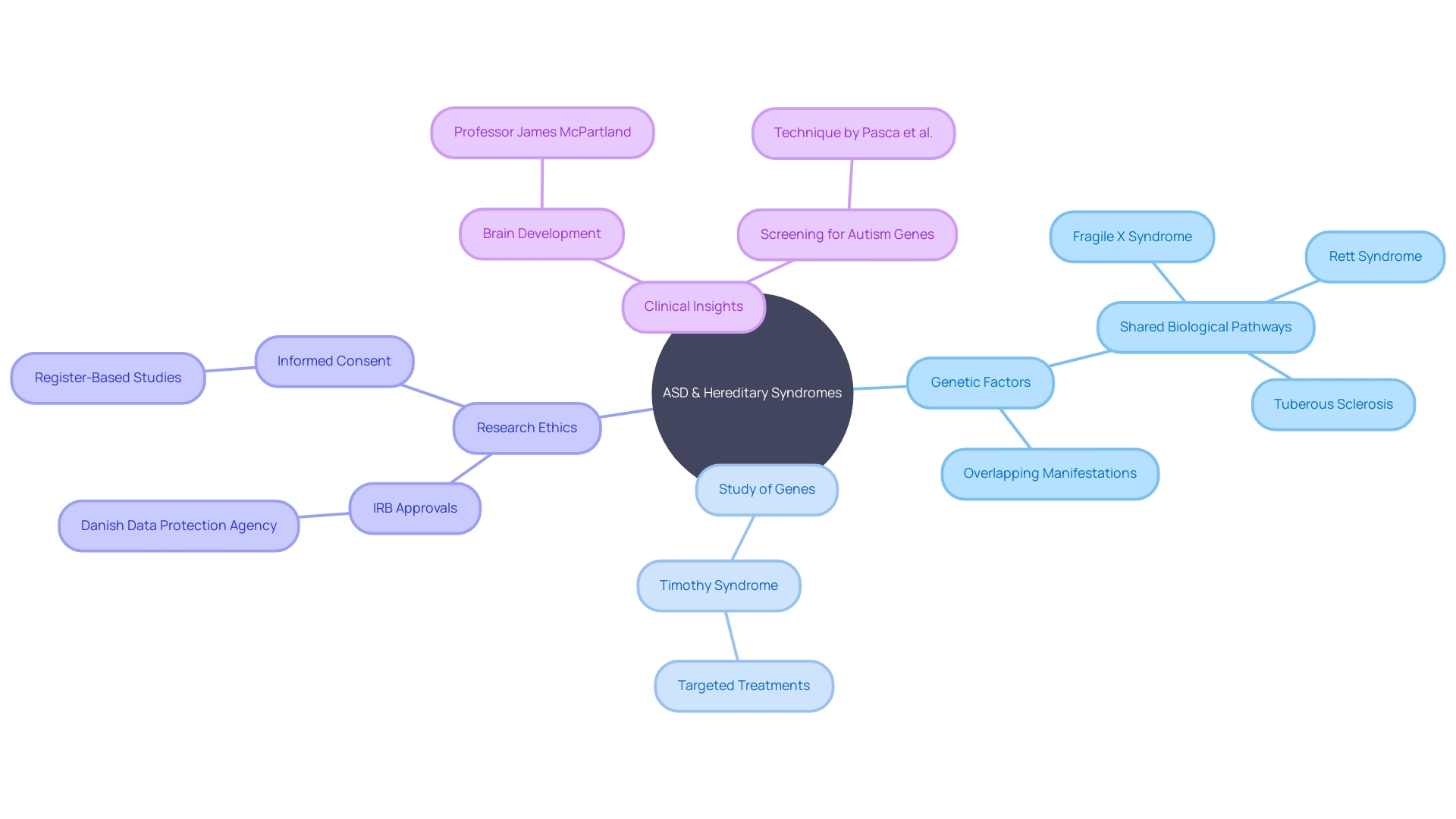
Role of Epigenetics in Autism Etiology
The emerging area of epigenetics is illuminating how ASD, a multifaceted developmental condition, can emerge not only from inherited genes but also from the environment's influence on gene expression. This intricate dance between genes and environment starts even before birth, with studies revealing that prenatal exposures to various environmental factors—ranging from dietary elements, pollution, psychosocial stress, to lifestyle choices like smoking and alcohol—can leave epigenetic marks that affect gene behavior without altering the DNA sequence itself.
For example, the body's detoxification of neurotoxic organophosphate pesticide residues—common in the food supply—is compromised in children with a certain developmental disorder and ADHD, making them more vulnerable to these harmful exposures. Encouragingly, educating parents on nutritional epigenetics has led to tangible benefits. Armed with knowledge about how certain foods and ingredients relate to heavy metal and pesticide residue exposure, parents have been able to make informed dietary choices to protect and improve their children's health.
Furthermore, the state-of-the-art machine-learning model AutMedAI, obtained from analysis of a extensive dataset, demonstrated an 80% success rate in identifying children with the condition, highlighting the prognostic capability of early behavioral and developmental cues. This holds the tantalizing promise of not only early diagnosis but also interventions that could significantly alter the trajectory of ASD, helping more individuals achieve independent adulthood.
As the occurrence of ASD diagnoses continues to increase, it becomes more evident that both hereditary inclinations and environmental interactions during crucial developmental periods play crucial roles in the expression of ASD. The live interaction of these factors, as researchers like Naviaux propose, controls the progression from inherited susceptibility to the onset of ASD symptoms, opening possibilities for early intervention and enhanced outcomes.
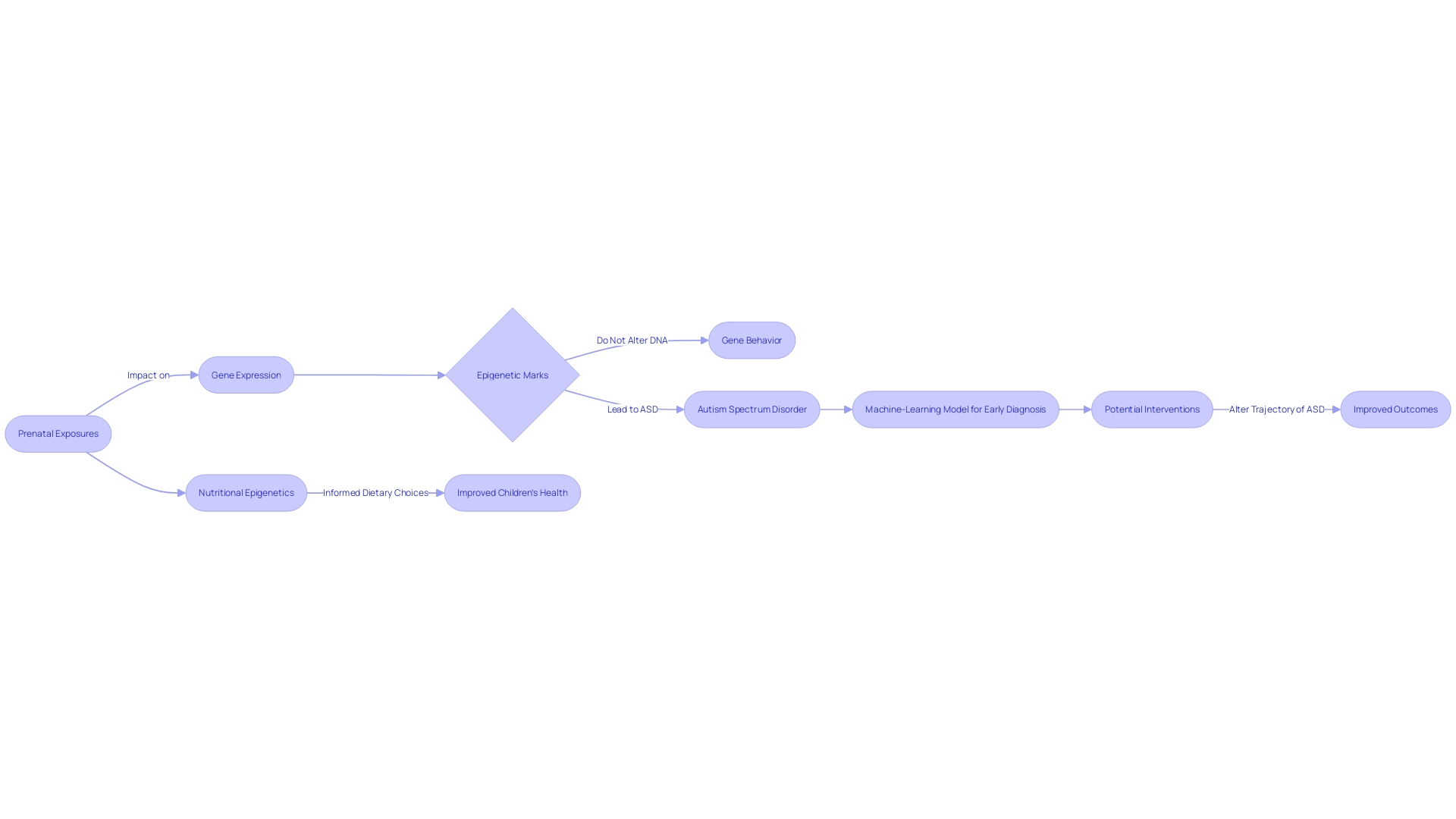
Current Research and Future Directions
In the intricate landscape of autism spectrum disorder (ASD), genetics play a pivotal role, with studies now suggesting a heritability factor of up to 90%. This hereditary impact is prompting a paradigm shift towards a genetics-first approach in understanding ASD, which could lead to better patient subtyping and the development of precise treatments. Despite the strong hereditary underpinnings of ASD, current diagnostic practices remain behaviorally based, and less than half of individuals with ASD undergo genetic testing. The identification of over 200 copy number variations (CNVs) linked to ASD underscores the importance of variations in the disorder.
Advancements in genomic technologies, such as whole-genome sequencing and gene expression profiling, are propelling research forward, uncovering new variations and pathways that contribute to ASD. These efforts are complemented by studies on gene-environment interactions and epigenetic mechanisms, which provide a more holistic view of the etiology of this condition. For instance, a study utilizing a unique machine-learning model, AutMedAI, showcased the potential of integrating genetic insights with other diagnostic parameters by demonstrating an 80% accuracy rate in identifying children under two years old with developmental disorders.
The quest for an early and accurate diagnosis of ASD is crucial, as research consistently demonstrates that earlier intervention leads to better outcomes. Organizations such as The Autism Community in Action are advocating for a diagnostic tool that can identify ASD as soon as possible, with new initiatives aiming to drastically cut down the typically lengthy diagnostic journey.
These discoveries in genetics related to ASD not only shed light on the path towards personalized interventions but also serve as a beacon of hope for families affected by ASD, promising a future where early, precise, and effective treatments are within reach. The shared objective of researchers, nonprofits, and the broader ASD community is to utilize these genetic insights to improve the lives of individuals living with ASD and their families.
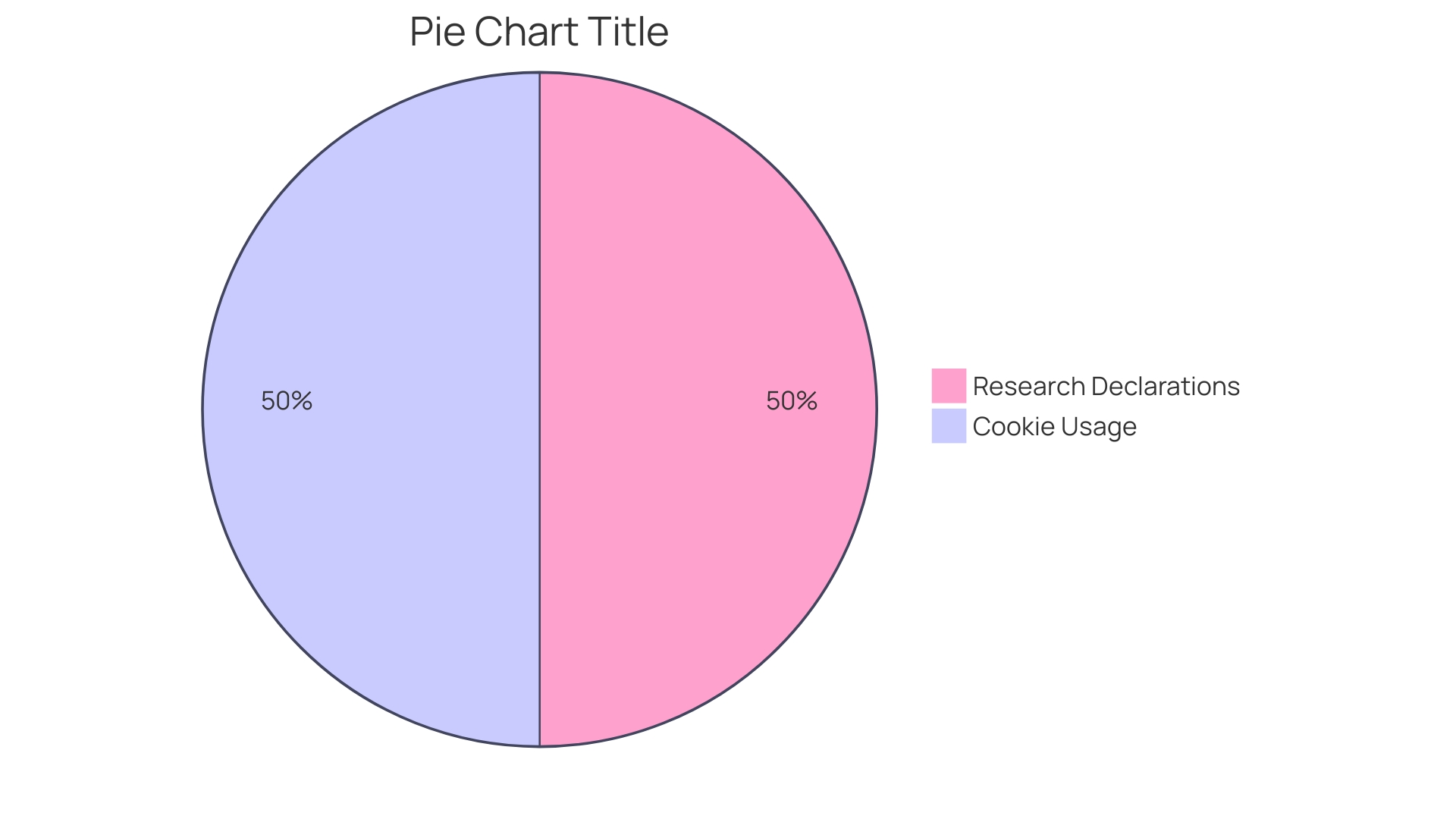
Debunking Common Myths About Autism Causes
Autism spectrum disorder (ASD) is a complex condition characterized by challenges with social skills, repetitive behaviors, and communication. It impacts individuals across the lifespan, with signs often appearing in early childhood. Despite greater public awareness and advances in understanding ASD, misconceptions persist. Notably, the idea that vaccines lead to a developmental disorder is one such myth that stands debunked by robust scientific evidence.
In a recent study, approved by the Danish Data Protection Agency and adhering to ethical guidelines, researchers leveraged a US database (SPARK), encompassing data from about 30,000 individuals both with and without ASD. They created machine-learning models, such as the 'AutMedAI', which showed an impressive accuracy rate of almost 80% in identifying children with the condition before the age of two. This tool has the potential to significantly aid in early diagnosis without the need for extensive assessments.
Statistics reinforce the prevalence of ASD, with 1 in 45 adults in the U.S. diagnosed with the condition. However, many adults may remain undiagnosed or misdiagnosed, making it crucial for individuals to recognize the signs of ASD. Adults with ASD may face similar challenges as children with the disorder, including difficulties in social communication and a tendency towards restricted and repetitive behaviors.
The concept of neurodiversity celebrates the differences in how individuals' brains operate. It acknowledges that while the majority may be neurotypical, others are neurodivergent, potentially diagnosed with conditions such as ASD, ADHD, dyslexia, or dyspraxia. This movement is reshaping perspectives across various fields, from science to social science and medicine.
Understanding ASD's genetic underpinnings is essential. While environmental factors may contribute, genetics play a significant role in the disorder's development. Healthcare professionals, trusted sources of information, can provide evidence-based guidance to dispel myths, such as the disproven link between vaccines and autism. It is vital to equip society with factual knowledge, fostering a supportive environment for those affected by ASD and their loved ones.
Conclusion
In conclusion, understanding the genetic factors of Autism Spectrum Disorder (ASD) is crucial for tailored interventions and nurturing the potential of individuals with autism. Collaborative research efforts have shed light on the significant hereditary component of ASD, with genetic variations playing a pivotal role in its development. Studies have revealed the recurrence of autism in siblings, suggesting a hereditary pattern.
Cutting-edge tools like Genotypes and Phenotypes in Families (GPF) are expanding our understanding of ASD's genetic landscape. Specific genetic mutations, such as SHANK3, CHD8, and PTEN, interfere with typical brain development and contribute to autism-related symptoms. The interplay between genetic predispositions and environmental factors, such as prenatal exposures and birth complications, amplifies the risk of ASD.
Certain genetic syndromes, including Fragile X syndrome and Rett syndrome, exhibit an overlap with ASD manifestations, highlighting shared biological pathways. Epigenetic research emphasizes the impact of environmental factors on gene expression and ASD development.
Integrating genetic insights with other diagnostic parameters can lead to early and accurate diagnosis, enabling targeted interventions that improve outcomes for individuals with ASD. Debunking myths, such as the disproven link between vaccines and autism, is vital for fostering a supportive environment for individuals with ASD and their families.
By harnessing genetic insights, we can enhance the lives of those affected by ASD, offering a future with early, precise, and effective treatments. Collaborative research, innovative tools, and a comprehensive understanding of the genetic factors involved will continue to drive progress in supporting individuals with ASD and their families.




